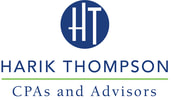|
Optimizing your operating cash flow really boils down to three basic rules:
Unless you are in a retail business, most receipts for sales or services performed take place some time after the sale actually occurs. A sale is made, goods are shipped or services are performed, an invoice is presented and you wait for payment. Here are three ideas for accelerating when you receive payment:
Holding on to your money as long as possible also improves your operating cash flow and enables you to earn interest on your funds:
Finally, you should make sure you are earning as much as you can on your excess cash balances.
Cash and time are two of your most precious resources. Spending some time setting accounts receivable policies, negotiating payment schedules with vendors and finding the right account(s) for your cash will help you maximize both. Give us a call and we'll help you organize finances for maximum cash flow efficiency. Comments are closed.
|
Newsletter articles are posted every 2 weeks. If you would like to have our e-newsletter delivered directly to your inbox, please sign up. Your information is confidential; you can unsubscribe at any time. Subscribe. Categories
All
|
Proudly powered by Weebly

 RSS Feed
RSS Feed